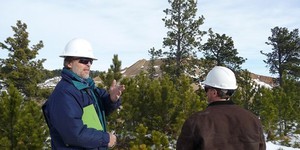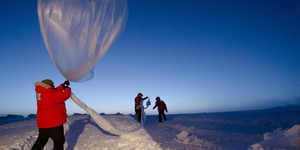Abstract
Has the temperature in your house felt hotter or colder recently? This could be due to the greenhouse effect. The greenhouse effect states that gases in the atmosphere, such as CO2, might increase the surface temperature of Earth. In this science fair project, you will build a small model of Earth and use it to see how the temperature varies, compared to outside of the model. If you select this science fair project, you will be a part of the effort that is working to figure out what role greenhouse gases have in shaping our Earth's atmosphere.Summary
Michelle Maranowski, PhD, Science Buddies
This project is based on the project titled "Creating a Greenhouse: How much will the Temperature Rise Inside a Greenhouse from the following source:
- Loret, J and Tanacredi, J eds. Experiment Central: Understanding Scientific Principles through Projects. El-L Volume 2, United States of America: UXL, 2000. 294-300.
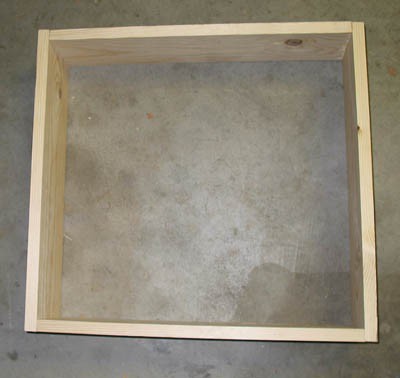
Objective
The objective is to build a simple and small greenhouse and investigate how trapped infrared radiation affects the temperature within.
Introduction
Do you know the cause of the last ice age? Do you know why the last ice age started and why it ended? This question puzzled scientists in the nineteenth century, and many of them put a lot of effort into figuring it out. In 1824, Joseph Fourier, the famous French mathematician and physicist, discovered that gases in the atmosphere might affect the surface temperature of Earth. He called this the greenhouse effect. Fourier reasoned that energy, in the form of visible light from the Sun, can easily penetrate the atmosphere to reach the surface of Earth and heat it up, but heat can't easily escape back into space. Our atmosphere absorbs the heat coming from Earth, called infrared radiation, and radiates some of it back to Earth. This is why we are warm, instead of a lifeless and frigid planet.
In the mid-nineteenth century, John Tyndall was also trying to figure out what started and ended the ice age. In the course of his investigation, he looked into which gases in the atmosphere could trap heat. He found that water vapor and carbon dioxide (CO2), two components of the atmosphere, could trap heat. In fact, even though there are only a few parts in 10,000 of CO2 in the atmosphere, even a trace amount can affect how much heat the atmosphere radiates.
At the end of the nineteenth century, a Swedish scientist, Svante Arrhenius, performed a complicated calculation that showed that cutting the amount of CO2 in the atmosphere could lower the temperature by 4–5 degrees. That would be sufficient to cause an ice age. At the time of the last ice age, geochemical events may have caused variations in the amount of CO2 in the atmosphere. According to Arvid Hogbom, a friend of Arrhenius', human activity at the end of the nineteenth century was adding CO2 to the atmosphere at about the same rate as geochemical processes. Arrhenius predicted that at that rate, there would be global warming in a few centuries. He didn't realize that humans would continue to increase their rate of CO2 production. Being too warm didn't bother Arrehenius because he lived in chilly Sweden!
The study of climatology and the effects of excess CO2 are very complicated. Just as water moves through the water cycle on Earth, CO2 moves through the carbon cycle. Carbon dioxide cycles in water, vegetation, air, soils and living creatures. How all of these carbon cycles interact can help in finding a possible answer to global warming. In this science fair project, build a model of Earth, a simple greenhouse, and investigate how heat is trapped in the model and how the temperature varies. You will compare the temperature inside and outside the model Earth at different times of the day. See for yourself how the greenhouse effect works!
Terms and Concepts
- Greenhouse effect
- Infrared radiation
- Radiate
- Atmosphere
- Geochemical
- Rate
- Climatology
- Global warming
Questions
- What is the greenhouse effect? How does it work?
- What are the different layers of the atmosphere?
- What are the various gases that make up the atmosphere?
- What are some examples of natural geochemical processes?
- What are some examples of human activity that could possibly release CO2 into the atmosphere?
Bibliography
- Wikipedia Contributors. (2008, September 29). Greenhouse effect. Wikipedia: The Free Encyclopedia. Retrieved September 29, 2008.
The following website explains, in great detail, the history of the greenhouse effect and the famous scientists who contributed to this area of science. It also has links to other useful articles.
- Weart, S. (2008, June). The Carbon Dioxide Greenhouse Effect. Retrieved September 19, 2008.
For help creating graphs, try this website:
- National Center for Education Statistics. (n.d.). Create a Graph. Retrieved October 20, 2008.
Materials and Equipment
- Wood board, 1" X 6" X 20" (4) . You can purchase a 1" X 6" x 8' board at your local hardware store and have them saw it into pieces for you.
- Nails, 2 inches long (8)
- Hammer
- Safety glasses, like the one available from Amazon.com.
- Adult helper
- Sheet of transparent plastic or glass, 24" X 24", ¼ inch thick. You can purchase this from your local hardware or plastic store. You can also find this online at www.tapplastics.com. Plastics are usually sold with a sticky coating on both sides. Peel this coating off prior to starting the project.
- Thermometer that can take measurements up to at least 60°C (2), these can be purchased from an online supplier such as Amazon.com
- Sunny outdoor location to do the project. You should have a location on flat ground that will be in direct sunlight during the day for at least several hours. Since you will test the project for a week, it is OK if it is not sunny all day every day (some cloudy days are OK).
- Optional: if you cannot test this project outside due to weather conditions in your area (e.g. too many cloudy days), you can test it inside with an incandescent light bulb or heat lamp.
- Lab notebook
- Graph paper
Disclaimer: Science Buddies participates in affiliate programs with Home Science Tools, Amazon.com, Carolina Biological, and Jameco Electronics. Proceeds from the affiliate programs help support Science Buddies, a 501(c)(3) public charity, and keep our resources free for everyone. Our top priority is student learning. If you have any comments (positive or negative) related to purchases you've made for science projects from recommendations on our site, please let us know. Write to us at scibuddy@sciencebuddies.org.
Experimental Procedure
- Put on your safety glasses. Have an adult helper assist you. Hammer two nails through each end of one of the wood boards. Don't hammer the nails completely through. Just hammer the nails 1 inch into the board. Repeat with a second wood board.
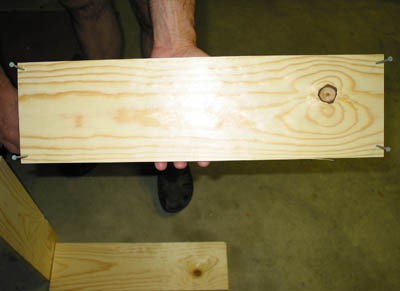 Image Credit: Michelle Maranowski, Science Buddies / Science Buddies
Image Credit: Michelle Maranowski, Science Buddies / Science Buddies
Figure 1. Wood board with two nails hammered in at both ends.
- Place the four wood boards into a square so that the two boards with the nails are opposite each other.
- Carefully hammer the nails into the adjoining wood boards. Make sure that the boards are straight and not crooked, and that the ends are flush. You should have a simple four-sided wood frame that sits flush to the ground.
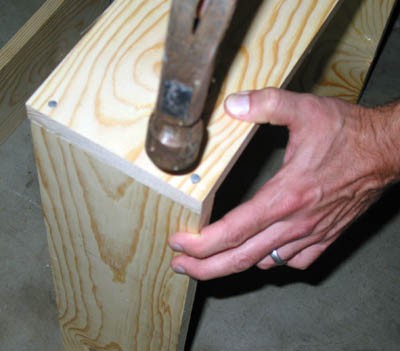 Image Credit: Michelle Maranowski, Science Buddies / Science Buddies
Image Credit: Michelle Maranowski, Science Buddies / Science Buddies
Figure 2. Hammering the nails in.
 Image Credit: Michelle Maranowski, Science Buddies / Science Buddies
Image Credit: Michelle Maranowski, Science Buddies / Science Buddies
Figure 3. The finished wood frame is not crooked and sits flush to the ground.
- Take your wood frame and lay it outdoors in a sunny location where it will not be disturbed for seven days. Try to find a location that is on top of soil and not on concrete or brick. Place one of the thermometers inside the wood frame.
- Drape the wood frame with the square plastic sheet. Make sure that the plastic covers and overlaps the entire wood frame. There should be no gaps between the wood and the plastic. This model represents Earth and our atmosphere. The ground and the wood frame model the Earth and the plastic sheet represents the atmosphere.
- Place the second thermometer outside of the wood frame, next to it. Place it so that it is not under the plastic. This model represents Earth without an atmosphere.
- Record the temperature inside and outside of the model at three different times of the day, for seven days, in your lab notebook. Use a data table, like the one shown below. Try to take temperature readings at approximately the same times each day. Record the weather for each day that you take temperature readings in your lab notebook.
- Plot your data on a scatter plot. Label the x-axis Time of Day and the y-axis Temperature. If you need help creating a graph, try Create a Graph. Plot the data for all seven days on the same plot. Make one plot for the outside data and one plot for the inside data. Is there a difference between the inside data and the outside data? How large is the difference? Is there a dependence on weather?
| Date | Weather | Time | Inside Temp. (°F or °C) | Outside Temp. (°F or °C) |
Ask an Expert
Global Connections
The United Nations Sustainable Development Goals (UNSDGs) are a blueprint to achieve a better and more sustainable future for all.
Variations
- Move the model to a shady spot and repeat the experiment. What changes do you notice?
- Prior to taking your earliest measurements, place two bricks inside the model. How does having the bricks inside the model affect your later measurements?
- Place the model on different surfaces (concrete, black or white poster board) and see how this affects your temperature readings.
Careers
If you like this project, you might enjoy exploring these related careers:





